CIPP Liner Testing QA Services
Paragon Systems Testing is a leading Cured-In-Place-Pipe CIPP liner testing centre and was the pioneer North American testing laboratory to introduce the ASTM D2290 apparent tensile test to the pressure pipe rehabilitation lining industry.
With over 20 years of experience as a CIPP testing lab, We are fully conversant with and capable of performing all North American (ASTM D5813, ASTM F1743, ASTM F2019), International Standards (ISO 11296-4, ISO 178 CIPP), European (EN) and Quebec (BNQ) CIPP liner testing procedures.
CIPP Flexural Testing
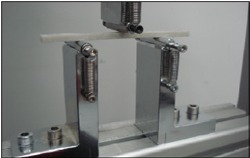
ASTM D790 flexural testing
Short-term flexural modulus is one of the primary cured-in-place-pipe CIPP liner testing properties used in the design of a CIPP liner.
Tangent modulus and flexural strength are used to characterize the ASTM F1216 flexural properties of a CIPP liner which is loaded in bending.
Cured-in-place-pipe installations are field installations and for this reason, the representative test samples from each installation will be quite varied.
Sewer, watermain, unreinforced, reinforced, gravity or pressurized – each type of CIPP liner requires a thorough understanding of the specimen preparation and testing techniques that need to be used if accurate flexural data is to be generated.
Paragon Systems Testing is the only North American independent cipp testing lab to have established the connection between flexural test specimen preparation and its effect on measured flexural properties in cured in place pipe liner testing.
Our peer-reviewed research in this field has been published at many trenchless industry conferences.
ASTM d5813
CIPP Hoop Tensile Testing
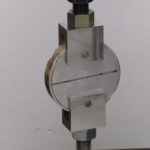
ASTM D2290 apparent tensile strength test for CIPP liners
Pressure pipe CIPP liners, generate most of their strength in the 90 degree orientation.
Hoop Tensile testing a CIPP pressure pipe liner in this direction to confirm the CIPP liners properties is complicated by the fact that a liner field sample is cylindrical so an ASTM D638 conforming tensile test coupon cannot be prepared.
The ASTM D2290 test method provides a technique for more readily measuring the 90 degree orientation tensile properties on CIPP pressure pipe liners where the hoop direction properties prevail.
ASTM f1743
CIPP Wall Thickness Testing
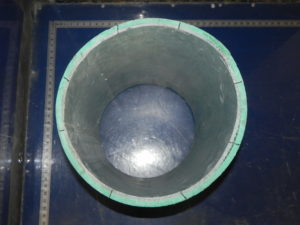
Pipe Thickness
Wall thickness is a critical liner property which is used to determine conformance of a CIPP liner to a liner design.
Sewer, watermain, unreinforced, reinforced, gravity or pressurized – each type of CIPP liner requires a thorough understanding of the design of the liner in order to accurately measure a CIPP liner wall thickness.
ASTM f2019
CIPP Resin Spectral Analysis
The main benefit of CIPP liners is the 50 to 75 year life extension that the material provides when it is properly installed by an experienced installer.
The life extension for sewer liners is predicated on long term creep testing of the specific CIPP liner resin chemistry used.
CIPP liner owners or contract administrators can verify that the resin used in a CIPP liner installation is the same resin used to obtain long term creep data by sampling resin from the installation.
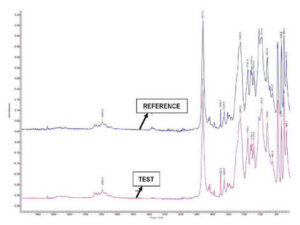
Infrared spectrographic analysis of liner resin comparison
Spectral analysis (FTIR) is a valuable tool in your CIPP quality control tool kit. A CIPP liner resin sample taken during installation of the liner can be compared to the same “fingerprint” of the resin used for the original creep testing to confirm that the correct, long term creep qualified resin is actually being installed.
CIPP Flexural & Tensile Creep Testing
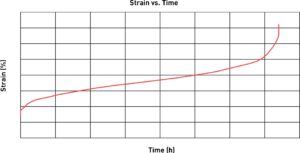
ASTM D2990 tensile and flexural creep
Plastic materials which undergo sustained static loads, experience a phenomenon called creep. Creep manifests itself as a slowly increasing deformation of the plastic material over time. Creep can limit the life of plastic materials. Cured-in-place pipe liners are designed to extend the life of underground infrastructure for decades. As a plastic material, CIPP liners also exhibit creep.
Most CIPP systems are designed to achieve at least a 50 year life extension using ASTM F1216 design considerations. One of the material properties which is required to perform the F1216 design calculation is the long-term modulus of elasticity or EL.
Depending on the liner application, EL is derived with either a flexural or a tensile creep test in accordance with ASTM D2990. Test specimens are placed under static load typically for 10,000 hours while the strain is monitored and recorded.
ASTM d2990
Plastic Pipe Short-Term Pressure Testing
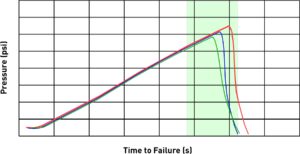
ASTM D1599 burst test
The burst pressure of plastic pipes can be sensitive to the rate of pressure application. For the ASTM D1599 quick burst test the pipe sample is immersed within 23C water while the interior of the pipe is pressurized with water. The water pressure is increased at a linear rate until the required pressure is achieved. Two procedures are described in the test method. Procedure A is a test to failure where failure of the sample must occur within 60 to 70 seconds. Procedure B is a proof test where the sample must achieve the minimum burst pressure within 60 to 70 seconds.
More From Testrium
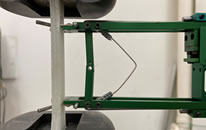
Mechanical Testing
How strong is it? Will it resist wear? Is it likely to crack when being stamped? These are some of the questions that can be answered by testing the mechanical …
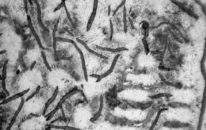
MicroStructure Testing
Microstructure materials testing is the science of interpretation of material structures. By sectioning, polishing and …
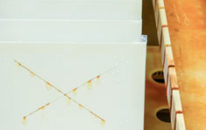
Coating Performance Testing
Coatings (both paint and plating) are used to enhance a variety of properties of a substrate. Corrosion resistance, hardness …
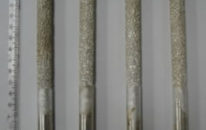
Anode Efficiency Testing
Buried ductile iron and cast iron pipe is exposed to continual corrosive attack which eventually leads to pinhole depressions in the …
[nf-popup id=3809]

